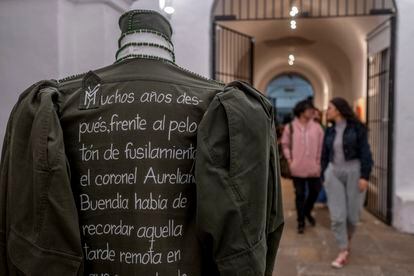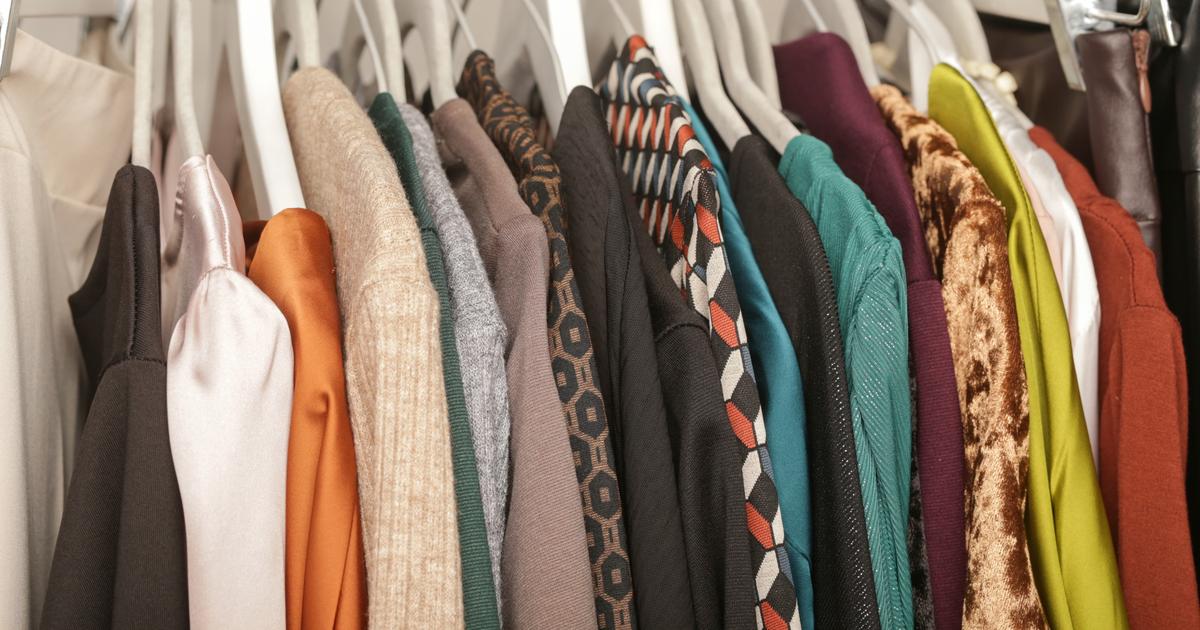EL PAÍS offers the América Futura section openly for its daily and global informative contribution on sustainable development.
If you want to support our journalism, subscribe
here
.
They arrived in Bogotá more than 70 years ago.
Most of them were poor and displaced by the armed conflict and settled in the Plaza de España to start a business with the only thing they could get: second-hand clothes.
The
junk dealers
started a whole trade around the used clothes that they brought from everywhere.
Once they reached their hands, the transformation began to be able to sell them: mending rips, bending collars, hiding defects... Necessity made them pioneers of resistance to
fast fashion
;
an increasingly loud cry in the sector.
A sample of textiles from organizations such as Threads of History, Ancestral Fabrics and Co-creation Workshop.
santiago table
"The planet is no longer served by using throwaways," explains John Bernal, 50, a photographer and one of the 12 designers and social leaders exhibiting in the exhibition 'Fashion with stories: textile recycling and co-creation laboratory' in the National Museum of Bogota.
More than a dozen dresses made with clothes that the Falabella textile brand did not sell in season will be on display until the end of September in front of a collection of garments with more than 500 years of history.
All of them referents of the cultural changes of the country and of the contemporary world.
“This generates a very interesting conversation,” says Andrés Góngora, curator of ethnography of space, “because this is the revolution that current fashion has to look towards.
It is tremendous to think that much of the clothing that arises from that desire to create and create ends up being burned in Eastern Europe.
We don't need that much."
Although the
junk dealers
are disappearing from the square, their eagerness to fix instead of buying again is what permeates this exhibition.
The fashion industry is the second most polluting, after the automotive industry and represents 10% of global carbon emissions, the equivalent of what the European Union produces.
The growing tendency to overproduce and provoke in the consumer an idea that he needs to buy more is known as fast fashion.
From 2000 to 2015, according to New Textiles Economy, the production of clothing doubled in the world.
Seven years ago, garments manufactured exceeded 100,000 million.
However, of all this massive manufacturing, close to 70% ends up incinerated or in landfills.
"We believe what the industry tells us," criticizes Katherine González, a 32-year-old fashion designer in front of her work 'Degenerate Consumption': a futuristic denim jacket intertwined with a black ruana that bears the slogan "No one can do it all , but we can all do something” on the sleeves.
"
Fast fashion
is going to kill us," she laments.
The seamstress has a brand in which she recycles the material that her father, a cabinetmaker, cannot reuse for upholstery.
“It is quality material and durable.
He has to fight the idea that we 'need' everything we buy”.
For Lucía Ortiz, goldsmith, and designer of the piece 'Sororidad', the chain of traceability and social projects are key to her jewelery brand: “That is what marks the stop in the world today”.
The exhibition also brings together a collection of 48 pieces including garments, accessories and works of art, such as the liqui-liqui (typical costume of the Llanos) worn by Gabriel García Márquez when he received the Nobel Prize for Literature, a bathing suit from 1923 and a 1940 necklace belonging to the Kofán people of Putumayo.
For two months, the artists met periodically to be inspired by these elements and around the same question: Where do the clothes you wear come from?
The sample created by 12 entrepreneurs and social leaders from the center of Bogotá.
santiago table
This exhibition, directed by the designer Alejandro Crocker and organized jointly by the Bronx Creative District-Fuga, is installed in the room where the prisoners made their confections in the middle of the last century, when the National Museum served as a prison.
“We wanted to use this story and resignify it with stories of freedom, creation, and participation,” explains Góngora.
“The result of a co-creation work that recognizes the importance of the circular economy, recycling and traditional trades in the center of Bogotá is exhibited,” said Margarita Díaz, director of the Bronx Creative District – FUGA, at the inauguration.
"It is an opportunity to understand the environmental impact generated by the fashion industry and the need we have to recycle, give new life to unused garments and generate sustainable creative industries."
The room is a coming and going of people who stop for several minutes to observe the works and talk about the reflection that it generates.
In the center of the exhibition there is a table full of remnants, threads, scissors and needles that invite the public to sit down and create.
In this part of the sample there is no "do not touch".
“Create to resist”, says a black bandana, on a feminist symbol.
"Hydrangea", she reads on a piece of green cloth with gold lace.
Slow down fast fashion
Omar Genaro Espinosa (44) and Gustavo Andrés Villegas (26) look at her dress with great pride.
It is a piece is a tribute to the Sikuani people (guardians of nature), one of the 87 recognized indigenous communities of Colombia, highly affected by violence and forced displacement and known for their fabrics.
"It's his way of persisting," criticizes Villegas.
“This is a dress from the Victorian era, which represents colonization and the Sikuane necklace, which we put on top of it, represents their resistance.
They have known how to get over racism, colonization, violence...”, adds Espinosa.
Omar Genaro Espinoza, Katherine González, Gustavo Andrés Villegas, and designer and photographer John Bernal are some of the participants in the exhibition.
For both of them, this is the philosophy to which “we must return”: “The clothes we wear have to tell a story”, says Villegas.
“And it cannot be that at our expense we are destroying the planet.”














